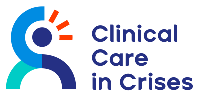

L1 Narrative Guidelines
Using evidence-based guideline recommendations and accompanying implementation and data guidance for emergency settings
Narrative guidelines are the first layer of the CCC project (L1), and involve the review and, where needed, adaptation of WHO’s current clinical care pathways in preparation for digitization.
Phase 1 of the project focuses on reducing mortality in emergency settings in three priority areas:
- integrated management of childhood illness (IMCI)
- malnutrition, and
- newborn care
These will act as the pathfinder for expansion to more age groups and health conditions in a second phase.

Integrated management of childhood illness (IMCI)
IMCI can be used by doctors, nurses and other health professionals who see sick infants and children aged from 1 week up to five years. The IMCI guidelines describe how to care for a child who is brought to a clinic with an illness, or for a scheduled follow-up visit to check the child’s progress.
IMCI priority areas for emergency settings:
- Triage
- Diarrhoea
- Fast breathing (pneumonia)
- Fever

Acute Malnutrition
A child with severe acute malnutrition (SAM) undergoes profound physiological and metabolic changes and for this reason, specific guidance is required on the management of the condition and its associated complications.
Malnutrition priority areas for emergency settings:
- Underweight
- Wasting

Newborn
To ensure every child survives and thrives to reach their full potential, we must focus on improving care around the time of birth and in the first weeks of life.
Newborn priority areas for emergency settings:
- Newborn resuscitation
- Newborn sepsis
- Low birth weight/preterm
What was the status of the guidelines prior to this review?
The WHO Manual for the Health Care of Children in Humanitarian Emergencies was created in 2008 to serve as a reference for addressing child health in humanitarian emergencies.
The manual provided direction for evaluating and managing major causes of child morbidity and mortality for children 0-59 months using the ‘assess-classify-treat’ logic of IMCI. However, it has not been updated since its release in 2008.
Other WHO newborn and child health guidance and tools have not been adapted to address the broader range of neonatal and child health needs in emergencies (e.g., the health needs of children 5-9 years of age). These populations and health needs will be considered in Phase 2 of the Clinical Care in Crises project.
Who reviewed the guidelines?
A clinical reference group (CRG) of 30-40 clinical experts from academia, clinical practice, and operational agencies working in emergency settings was formed to review and adapt the narrative guidelines for Clinical Care in Crises.
All members have expertise in their respective fields and contributed to the review of existing narrative guidelines and the adaptations required for emergencies.
What are the outcomes?
A note for record from the first round of CRG consultations is available here.

